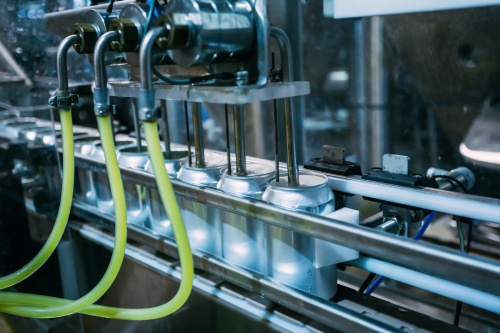Five Strategies for Successfully Navigating the Can Shortage

Ball, the largest manufacturer of recyclable aluminum beverage cans in North America, is raising the minimum order quantities for printed cans from one truckload to five truckloads per SKU and dropping their warehousing services beginning March of 2022. The deadline puts added pressure on beverage companies to secure cans for immediate production needs while building strategies for facing the ongoing can shortage.
Sizing up the Shortage
Ball’s announcement is a catalyst for a shift that has been underway for the past several years. So, what else is contributing to the shortage?
More Beer is Coming in Cans
In 2008, 56 percent of the beer brewed and sold in America came packaged in cans. According to the Brewers Association, aluminum cans currently make up around 60 percent of craft beer’s packaged volume.
The Rise of Seltzers, RTDs, and other Canned Beverages
Ready to Drink cocktails (RTDs), which often come in cans, grew 43% in global consumption in 2020, according to the IWSR. Meanwhile, the hard seltzer category, which also primarily uses cans, increased by $2.5 billion between 2019 and 2020.
COVID-19 Means More Drinking At Home
The COVID‑19 pandemic exacerbated the shortage by shifting purchasing from bars and restaurants to off-premise sales (grocery, etc.) for consumption at home. Consumers also started buying more beverages online. In the United States, online alcohol sales increased by 234%.
Manufacturing Capacity is Constrained
As indicated by Ball’s recent announcement, there is a bottleneck in the supply chain for aluminum cans. A few U.S. can manufacturers are in the process of expanding, including Ball, American Canning, and Ardagh. Still, it will take time for those facilities to catch up with demand.
From Analysis to Action
Many beverage brands have started to assess their options for navigating the can shortage. While there is no one-size-fits-all solution, there are several options to consider.
1. Seek Out New Sources
More beverage brands are considering purchasing cans from a distributor or broker. While there can be added costs, brands must also consider the potential costs of going out of stock, including the possibility of losing distribution and sales revenue.
2. Explore your Can Decorating Options
Whether you’re purchasing directly from a manufacturer or a distributor, several options are available to get artwork on your cans.
Printed cans typically offer lower per-unit costs but often come with larger minimum order quantities and longer lead times.
Shrink-sleeving your cans provides full coverage graphics, a broad spectrum of color options, quick turnaround times, and low order quantities. Other benefits include shifting the use of your can inventory between different labels, including the ability to re-sleeve printed cans in your inventory that aren’t moving as quickly, have been retired, or are overstocked.
The downsides of sleeved cans are the higher unit costs that come with the additional cost of the sleeve and the added difficulty in recycling sleeved cans.
Labeling your cans is a cost-effective alternative to shrink-sleeving if you have access to the equipment.
Digital can printing, is a relatively new print technology that can be used on brite cans but has the advantage of fast turnaround times and low minimum order quantities. With its high-resolution graphics and speed to market, digital can printing technology also offers beverage companies a way to differentiate themselves in a competitive marketplace with easily customized graphics for limited edition SKUs, sponsorships, promotional campaigns, or distributor samples.
3. Shift to Bottles
While some brands can switch production to bottles, it isn’t an option for most craft breweries or smaller beverage companies as it requires different equipment.
4. Adjust Your Can Size
Allowing your beverage to pivot can size provides opportunities to adjust your production based on the availability of a different sized can. Keep in mind that switching can size requires longer lead times to meet regulatory requirements. Also, not all co-packers can run all can sizes, so you’ll need to ensure your production plans align with the cans you plan to use. (new UPC codes as well)
5. Pare Back Your Product Portfolio
In April of 2020, Coca-Cola announced that they were “ruthlessly prioritizing to deliver on core SKUs.” SKU rationalization allows companies to determine whether they should discontinue any SKUs to reduce unnecessary production and inventory costs for underperforming products.
What is Your Purchasing Plan for Cans?
One of the most significant advantages beverage companies have in a competitive market is getting the materials they need, when they need them, at a cost they can afford. While some brands will succumb to the stress of the can shortage, others will take a proactive approach to turn their purchasing and production strategies into a source of competitive advantage.

